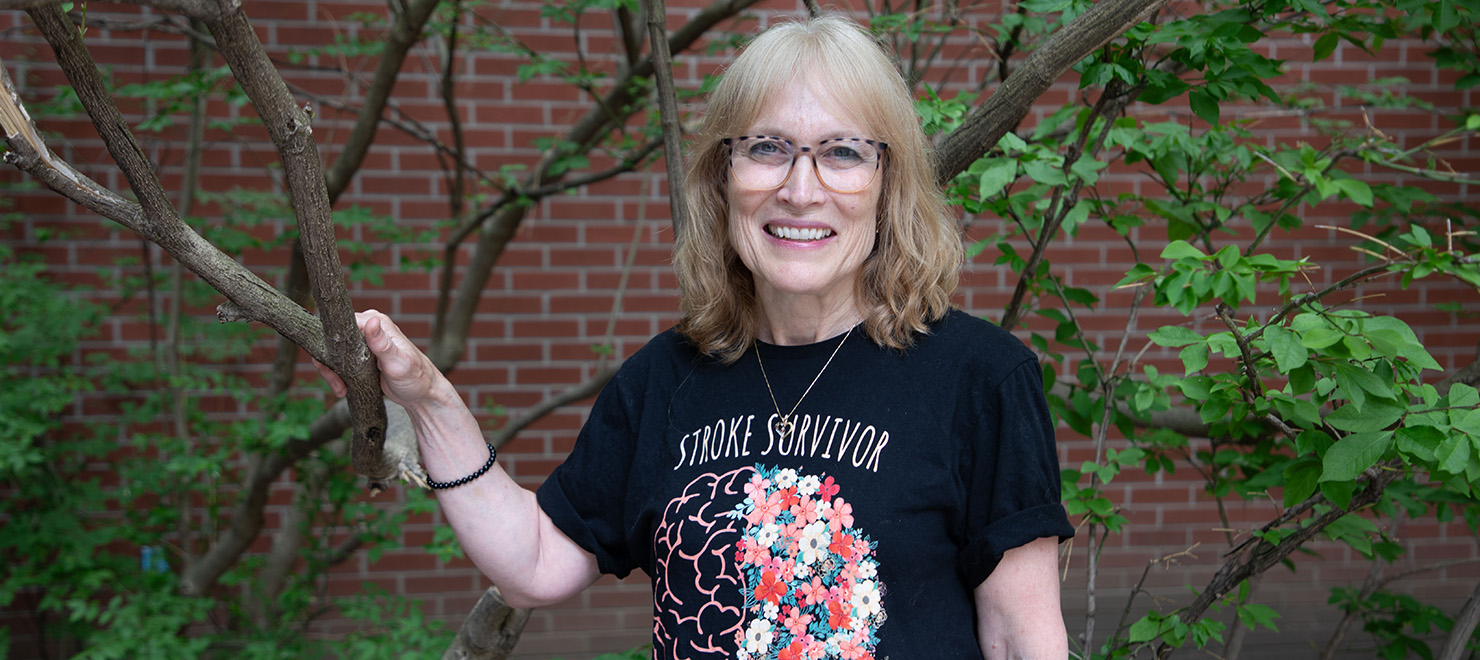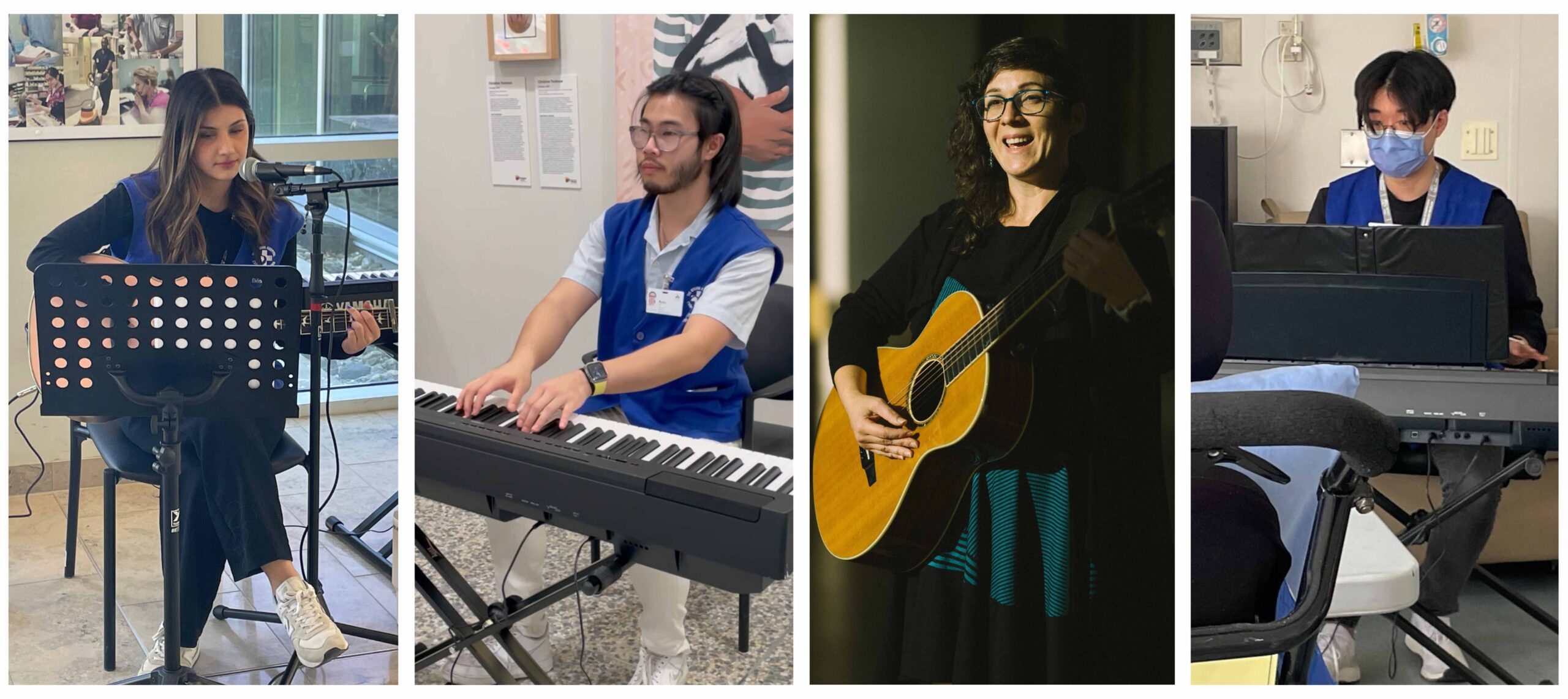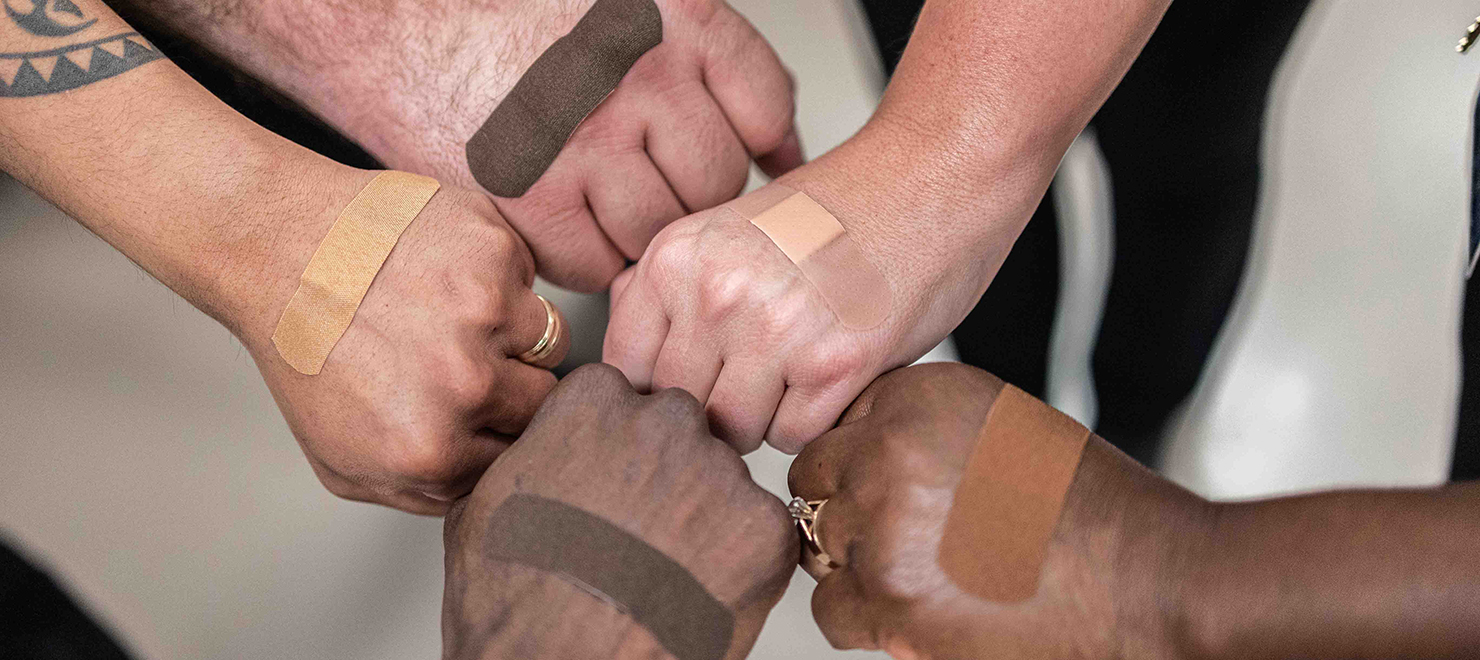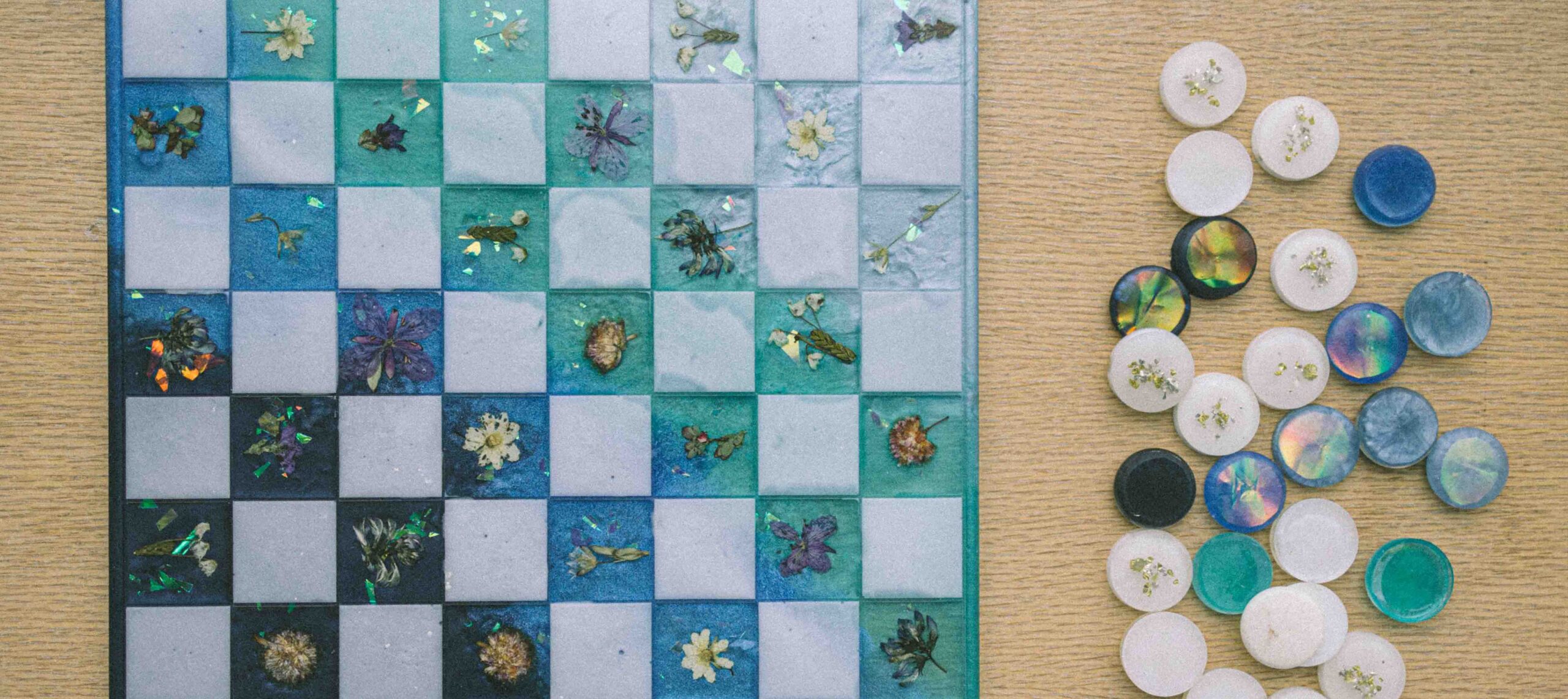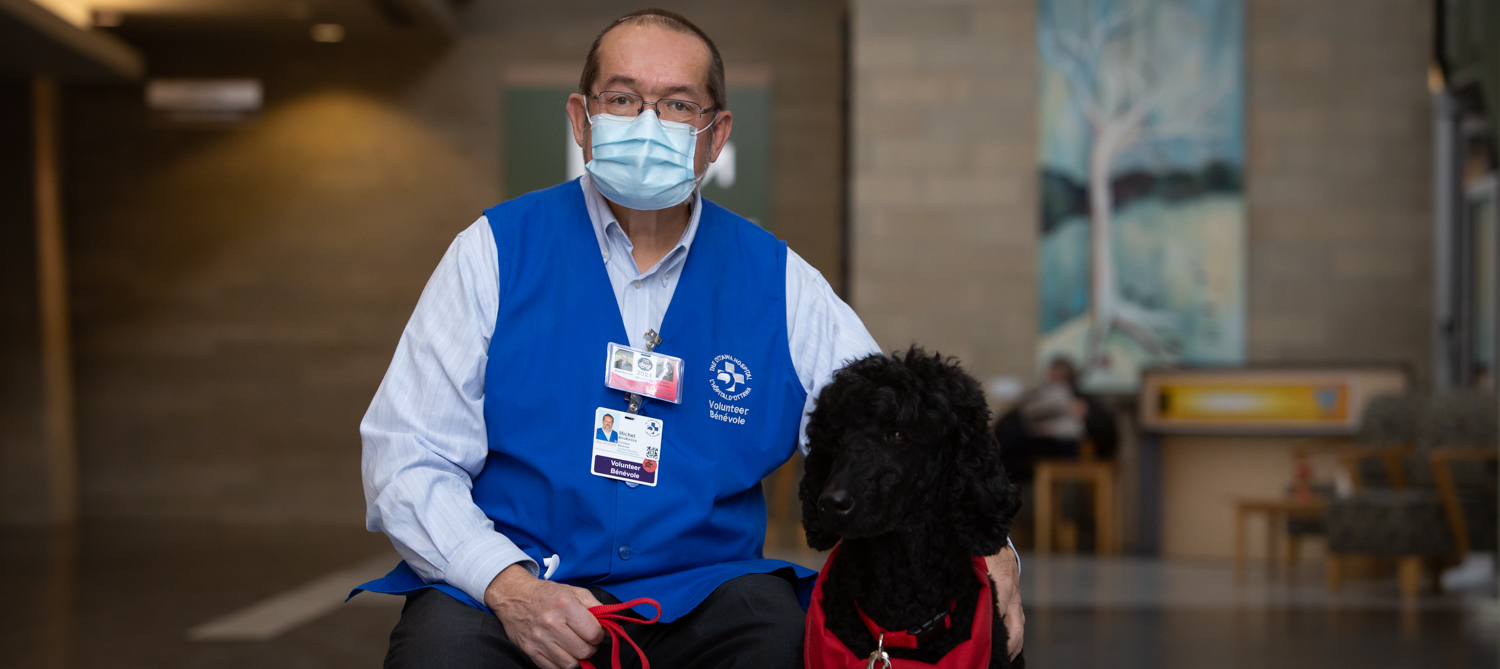
Six-year-old Copain wags his tail as he enters The Ottawa Hospital’s front doors. The sights, sounds and smells of a hospital could easily distract an ordinary dog—but not Copain. As one of several volunteer therapy dogs that visit The Ottawa Hospital, he and his K9 colleagues have an important job to do: help staff, patients and visitors manage the challenges of being in the hospital.
His handler, Michel, has been a volunteer with The Ottawa Hospital’s Pet Therapy Program for ten years, four of them with Copain.
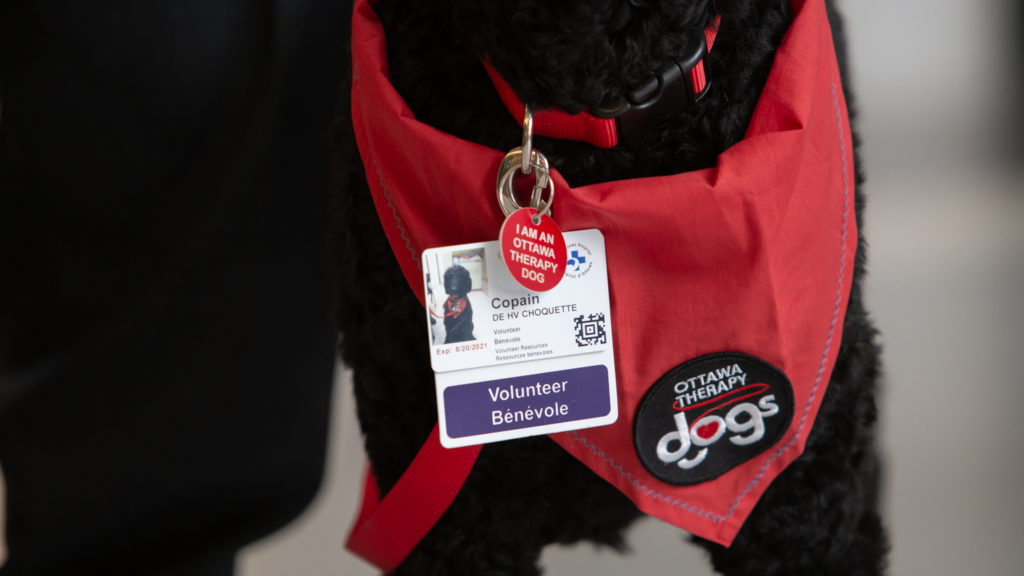
“Copain is very laid back,” said Michel. “He waits for people to come up to him, but once he gets close to a person and establishes a connection, he’ll lean into them. People say that’s his way of hugging.”
That hug is more than just a hug. Research suggests that interacting with a specially trained therapy dog has many brain and body benefits for hospital patients and staff.
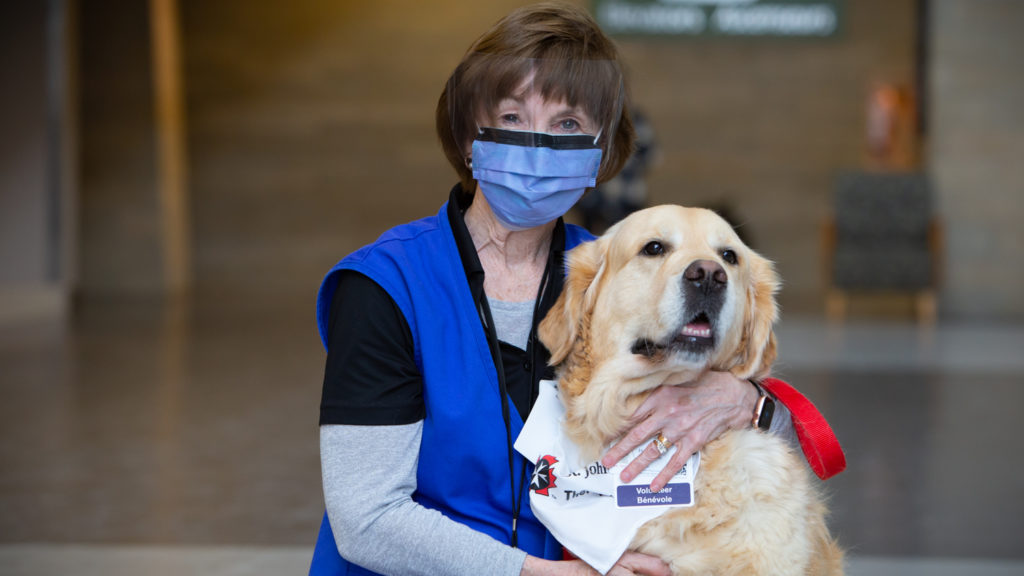
As Dr. Christine Boisvert, a clinical and rehabilitation psychologist at The Ottawa Hospital explains, interacting with a therapy animal Like Copain:
- Calms the nervous system. Heart rate and breathing rate slows down. Patients and staff report feeling generally calmer and more relaxed.
- Promotes physical and emotional health. Petting an animal can help a person with an arm injury learn to use their arm again. Grooming an animal can help a person living with depression feel a sense of purpose.
- Releases feel-good hormones (in the animal and the human). Higher levels of dopamine and oxytocin increase feelings of safety and connection. These hormones are released within just ten to 15 minutes of the interaction
- Helps humanize the hospital environment. Hospitals can sometimes feel like big, impersonal spaces. Therapy dogs help patients see that, at its core, a hospital is a place where people help people.
- Improves the patient-provider relationship: Patients and staff who interact with therapy animals report feeling more comfortable sharing information.
- Decreases loneliness. Long hospital stays can cause loneliness in some patients. A visit from a therapy dog pair provides joyful anticipation, a change in routine, and genuine companionship between the therapy dog and the patient.
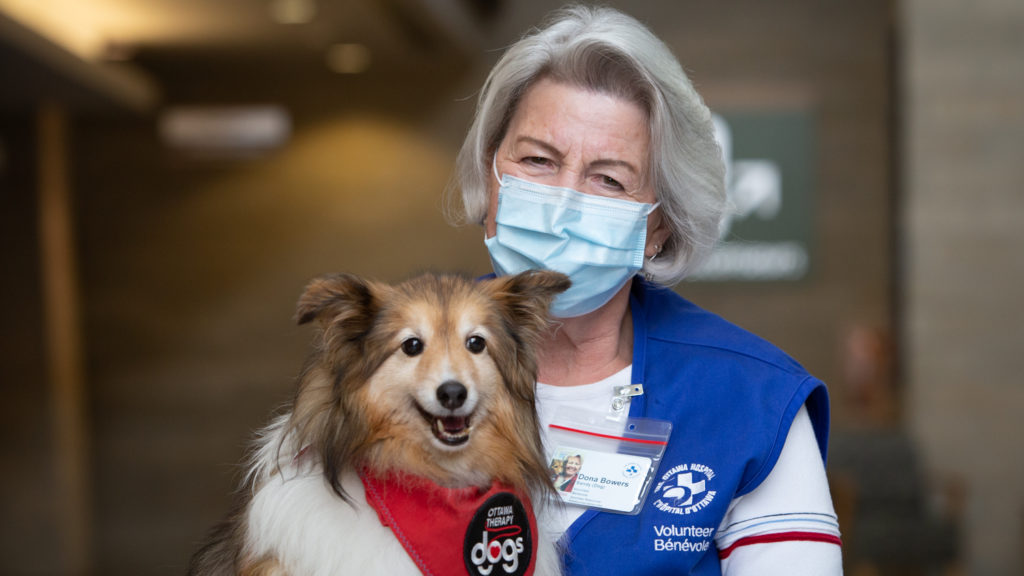
Not every dog is as highly trained as Copain, Happy and Sandy, but you can get some of the same benefits from interacting with a dog or other friendly animal in your life. So the next time you scratch an animal behind its ear and notice yourself smile and relax, it’s not just because of their cute face—it’s science!
About the Pet Therapy Program at The Ottawa Hospital
The Ottawa Hospital’s Volunteer Resources have a long-standing partnership with St. John Ambulance, Ottawa Therapy Dogs and Ottawa Humane Society. Therapy animals receive training and certification through these organizations, but they and their handlers must also be hospital volunteers. All requests and inquiries about the Pet Therapy Program at the hospital should be made through the hospital’s Volunteer Resources.

Support patient care and research at
The Ottawa Hospital
You might also like…
From survivor to supporter: Peer volunteers bring hope to patients recovering from stroke
Drawing on their own lived experiences as stroke survivors or caregivers, volunteers with March of Dimes Canada’s After Stroke Hospital Peer Connections program offer emotional support to those just beginning their recovery journey. Discover the difference they’re making and learn about how you can request support for a loved one — or become a beacon of hope yourself.
The place to be: The Ottawa Hospital recognized as one of Canada’s most admired corporate cultures
The Ottawa Hospital (TOH) has been named one of Canada’s most admired corporate cultures. Guided by compassion and commitment to patient care, TOH has developed a workplace culture that inspires confidence and trust in our employees, patients and family members.
Watch: Princess Margriet of the Netherlands sent us this lovely video message for the Civic’s 100th anniversary
If you’ve ever wondered why tulips are so important to our city, the answer involves a world war, a royal family and The Ottawa Hospital’s Civic Campus. In this special video message, Her Royal Highness Princess Margriet of the Netherlands shares why the tulip is a special symbol of the endearing friendship between her country and Canada.
A volunteer program that taps into the power of music
Studies have shown that music can benefit the body, mind, relationships and community. Musical Moments is a program where volunteers play live music to support positive outcomes for patients, visitors and staff.
We’ve got you covered: The Ottawa Hospital now offers bandages for a variety of skin tones
Whenever you’ve scraped your knee or had your blood drawn, odds are your bandage was the same colour every time. Peach has been the default hue for over a century — but no longer at The Ottawa Hospital.
Patient gifts a piece of home to Indigenous Cancer Program
Inuit patients can now see and hold a piece of their traditional territory in the Windòcàge Room at the General Campus, thanks to an interactive gift donated to The Ottawa Hospital by a cancer patient.


 To reset, hold the Ctrl key, then press 0.
To reset, hold the Ctrl key, then press 0.
